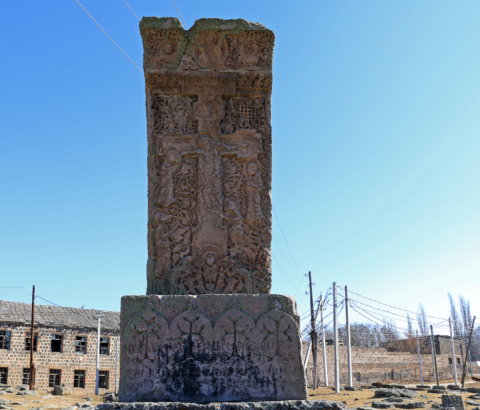The monastic complex of “Hnevank” (Old Monastery) is situated on a hill, deep within a gorge, on the right bank of the river Dzoraget – one of the largest tributaries of the river Debed. The several buildings Hnevank includes, are believed to be built at different times, having a religious, educational, and organizational role of the time. The complex consisted of three churches, a parish, and ancillary buildings. About 50m․ to the east of the complex remains of a large two storey building with many doors and windows can be found. Most likely, it is the convent residence.
According to the research, the main church was built in the 7th century. Its dome has a unique and unusual architectural structure. Georgian inscription found on it proves it was renovated in the 12th century, by Lord Smbat of the House of Orbelian. Above mentioned records became a source of controversies, as they made the Georgian church and historians claim Hnevank to be Georgian. However, the presence of Georgian letters is not surprising at all. Moreover, it is completely logical: back then, Georgia was at its strongest and its impact on the region was pretty huge.
Because of the bad condition, the road to Hnevank may be really challenging for drivers, although hikers can reach there from Dzoragyugh, Kurtan, Tsater, Arevatsag, and many other ways, following the well-marked trails, enjoying the mesmerizing view all along the gorge.


















